Whether you’re in the process of launching a new app or are just in the brainstorming stages, you’ve probably done your research around how much it costs to develop an app. But that isn’t the only cost you need to be concerned with.
While app development is a considerable up-front expense, app maintenance costs will become part of your day-to-day expenses for as long as your app is in operation. If you don’t spend the time and resources to maintain your app, it could develop glitches that lead to poor user reviews and a steadily decreasing user base post-launch.
So, what does app maintenance include and how much should you spend on it? We get into all the details of app maintenance costs in this article, including the factors that influence the price tag. Plus, we offer tips to keep your costs in check.
What is application maintenance?
To ensure your users continue to be satisfied with their experience of your app, you need to maintain it.
“Back when I was knee-deep in a project for a healthcare app, we realized pretty soon that consistent maintenance wasn’t just an afterthought,” says Sean Spittle, lead software developer, SaaS expert, and managing partner at InspectNTrack, makers of fire inspection software. “Oh, no — it was essential for survival.” But what does app maintenance actually entail?
Kunal Vaja, founder and CEO of Zennaxx Technology, a software development company, notes that app maintenance typically falls into three main categories: corrective, adaptive, and perfective.
As the name suggests, corrective maintenance is all about resolving issues. Adaptive maintenance is about ensuring your app keeps up with industry standards and new technologies. Perfective maintenance is all about optimizing performance and adding new features — or removing unnecessary ones.
Here are some of the different areas that fall under the app maintenance umbrella:
- Customer support: According to Spittle, answering customers’ questions is key to keeping them on your app. “Trust me, users will have questions, and a quick response can make all the difference. In one of my projects, setting up a dedicated support team turned out to be a game-changer, keeping users happy and engaged.”
- Bug fixes: It’s important to address any issues that your team discovers during testing or that are reported by users, says Vaja: “This ensures a stable and usable app experience.” If you don’t correct these issues, your users will notice — and complain. And if the issues are still not being resolved, you might start losing users to competitors.
- App updates: Alex Ragin, founder of Zoftify, an agency that builds software for travel companies, says that app maintenance also includes making small changes periodically, such as changing labels, tweaking forms, and improving the overall user experience. In some cases, app developers may introduce new features as part of their updates. However, this typically comes with an additional fee, says Vaja.
- Compatibility maintenance: When new operating systems, devices, or software versions are released, you will need to update your app to ensure compatibility across all platforms and devices.
- Compliance updates: Many apps have to abide by industry, company, or government-specific compliance regulations. “Apple and Google often introduce new requirements for SDKs [software development kits] and build tools, which should be updated timely,” notes Ragin.
- Performance enhancements: App developers need to monitor app performance and make improvements to increase speed, responsiveness, and resource efficiency, according to Vaja. This is a critical part of app maintenance.
- Security improvements: New vulnerabilities constantly appear with software as bad actors change tactics. That’s why it’s best to apply security patches and upgrades to protect your and your users’ data on a regular basis.
These are some of the main aspects of app maintenance, but this isn’t an all-encompassing list. According to Spittle, some developers also consider server and hosting fees as part of app maintenance as well. While hosting isn’t something required to maintain the app, the infrastructure is required to support and run it.
Factors that influence maintenance costs
Now that you know what goes into maintaining an app, how can you estimate your app maintenance costs? Keep these important factors in mind, as they will greatly affect how much you end up paying for app maintenance each month.
App complexity
“Simpler apps are cheaper to maintain, while complex ones require more resources,” says Spittle. “In one project, using mainstream tech made updates relatively painless, but another using a niche technology had us constantly searching for specialized expertise.”
Think about the features, integrations, and capabilities of your app to assess its complexity. This will help you determine your maintenance cost.
Technology stack and team
The technologies and platforms used to build and maintain the app can also affect the total cost of maintenance. Related to this factor is the location of your development team. The cost of app developers can vary greatly from place to place.
“If you outsource maintenance to an area with cheaper developer rates, you may save money compared to hiring staff in a more expensive zone,” says Vaja.
User base size
If your app is designed to serve your 200 employees, the maintenance costs will be pretty different compared to if your app was designed to serve 10,000 customers. The number of users affects the cost because of hosting fees, compatibility issues, security issues, and other considerations.
Third-party integrations and platform diversity
If your app needs to be able to integrate with dozens of third-party applications, that means you have to maintain each of those integrations — and the cost will increase with each one. You also may have recurring payments for each third-party service you use in development, such as those for push notifications, maps, or messaging. Similarly, platform diversity can increase your maintenance costs.
“Each platform may require specialized upgrades, bug repairs, and optimizations,” says Vaja, “resulting in additional development hours and more significant costs.”
Analytics tools
If you want to be able to monitor your app’s performance and user activity, you will need an analytics tool. Some developers prefer to use one of the many free tools available while others build their own. Either way, you have to dedicate time and resources to reviewing and acting on those analytics.
Changes in the external environment
There are some things you can control and other things you can’t. Certain external environmental factors like changes to industry standards, technology, or legal requirements can all affect your maintenance costs. While it’s difficult to estimate how much these factors influence cost, it’s always wise to build the unknown factor into your budget.
So, how much does app maintenance actually cost?
How much will you be paying in app maintenance costs? While it all depends on the aspects and factors we’ve covered above, you can estimate your maintenance costs by considering how much you spent on app development in the first place.
“An industry standard is to spend 15 percent of the total app development project cost on maintenance annually,” says Ragin.
However, this doesn’t always mean there is a direct correlation between app development and app maintenance. “If the app is poorly built, you might need to spend up to 50 percent on bug fixes,” Ragin says.
You can also estimate the total cost of app maintenance by considering what your maintenance scope will look like: “If maintenance includes new feature development, you’ll need a team consisting of a designer, developers, a project manager, and a tester,” says Ragin. “In this case, calculate the total cost by summing up the expenses (e.g., multiplying hours by hourly rates) for the entire team, which can vary.”
You will also want to think about how important the app is to your business. “Typically, if the app is crucial to the business, they will have a team supporting it to stay updated and constantly release new features and updates,” notes Ragin. If the app is not one that is crucial to the business, you may not need to spend as much on maintenance.
Regardless of what your app maintenance costs look like, it’s vital to remember that they are continuous. “App maintenance never ends,” says Spittle. “Don’t be fooled into thinking that it does, or it will cost you quite a lot.”
Keep your expenses in check
With so many different costs to consider with regard to app maintenance, it can be difficult to stay on top of it all. That’s why it’s a good idea to track your app maintenance-related expenses carefully.
To help keep costs in check, set periodic expense goals. Create monthly or quarterly limits for your expenses and track whether or not you’re exceeding them.
If your expenses are consistently higher than your projections, you may want to dig deeper to understand if there’s an underlying issue you haven’t yet identified as a problem.
If your expenses are coming in significantly lower than your projection, that could be a cause for concern as well. For example, you may not be doing everything necessary to keep your app in good working order.
Here are a few tips to make tracking expenses easier:
- Use customized forms and data collection tools. A spreadsheet is a basic tool that some people use to track expenses. However, if you want to organize your expenses more effectively, opt for a customized data collection tool. For example, Jotform offers expense tracking form templates that you can tailor based on your needs. The tracker templates are easy to use and intuitive to customize, so you can ensure you’re tracking the right data.
- Have a schedule for recording costs. Set aside a day of the week or month where you can input recent expenses into a data collection tool. If you don’t schedule this time in, you may forget about it or put it off. When it’s in your calendar, you’re more likely to just get it done.
- Look in the right places. Where can you find your expenses? Typically, you’ll want to review bank statements, credit card statements, receipts, and online payment system logs. Know where to look so you don’t miss any payments.
Build your next app with Jotform Apps
Building and maintaining an app can be costly; there’s no doubt about that. If you’re looking for an option that won’t break the bank but will still give you stellar results, try Jotform Apps. This no-code app builder is an excellent choice for many reasons, including
- Free and low-cost plans: With Jotform Apps, you don’t have to worry about cost. It has a free plan as well as highly affordable plans that start at just $34 per month.
- Over 700 app templates: If you want to save time and effort, use one of the hundreds of app templates that come free with Jotform Apps. For example, it offers templates for scheduling apps, patient management apps, tutoring apps, sales order apps, donation apps, checklists apps, and so much more. Each app template is fully customizable, so you can create an app that meets your exact specifications.
- Multiple sharing options: It’s easy to share your Jotform App with users in multiple ways, such as via social media, through direct links, or via QR code. If you want to regulate app access for specific users, you can use the advanced permission settings to ensure only the right people see and use your app. This feature is ideal for apps that are only for customers or employees, for example.
- Multiple medium options: Jotform Apps are not just for mobile. They can also be used on tablets, laptops, and desktop computers. This way, users can access the app content however they please.
Best of all, you don’t need any coding experience to use Jotform Apps. The platform is highly intuitive for all levels or app builders, so you never have to worry about high development and maintenance costs. Give Jotform Apps a try today.
Photo by Keira Burton







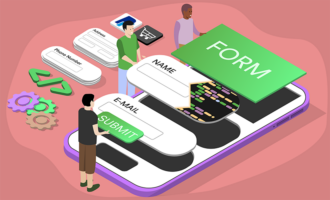














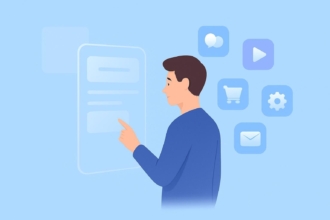























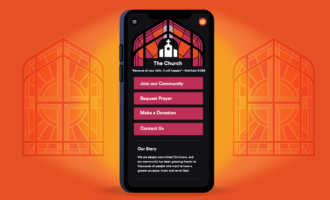




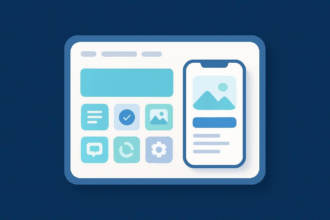


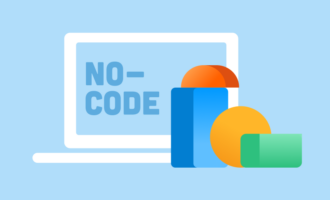



















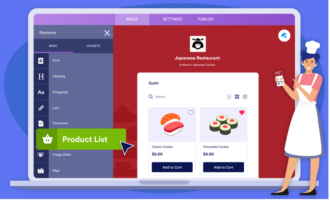


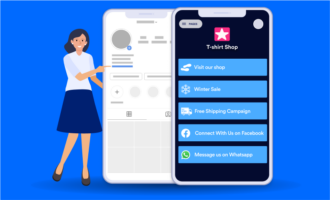


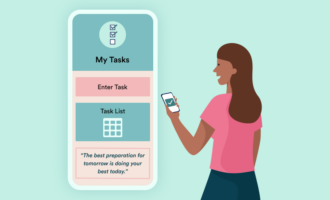





















Send Comment: